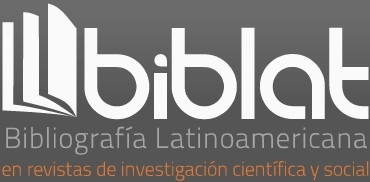Quelques réflexions sur la traduction en tant représentation
DOI :
https://doi.org/10.35494/topsem.2011.1.25.79Mots-clés :
-Résumé
Cet article explore la fonction de traduction en tant que
représentation. Reposant sur la sémiotique peircienne, il penche
en faveur d’une traduction qui agit comme une réflexion
interprétative, un interprètant qui détermine les relations entre
le signe et son objet. Ensuite, cet article explore l’aspect causal
et iconique de ces relations et tente d’illustrer les
fonctionnements de l’iconicité graphique, spécialement avec le
paradigme cognitif, et comment celui-ci affecte le processus de
traduction. En se concentrant sur le genre littéraire et plus
spécialement le genre poétique, sans toutefois postuler pour une
dichotomie du genre littéraire / non littéraire, le texte nous
fournit des exemples d’actions qui vont dans le sens de la nature
de la traduction, avalés par la théorie.
Téléchargements
Références
BALDWIN, J. M. (1901-5). Dictionary of Philosophy and Psychology, vol. 2. NY: Macmillan.
BOASE-BEIER, J. (2006). Stylistic approaches to translation. Manchester, Kinderhook: St. Jerome Publishing.
___________ (2010). Using Translation to Read. Paper presented at the Postgraduate Translation Symposium ‘Disordering the Disciplines: Translation and Interdisciplinarity’ organized by the University of East Anglia, Norwich on 26-27th March.
CALFOGLOU, C. (2001). “Γνωστική Γραμματική και Μετάφραση” (Gramática cognitiva y traducción). In F. Batsalia (ed.) On Translation: Current Approaches. Athens: Katarti & University of Athens, pp. 136-149.
___________ (2004). “The ‘peripheral’ gains dominance: Verb-subject
order in poetry”. In Ch. Dokou, E. Mitsi & B. Mitsikopoulou (eds.), The periphery viewing the world, Selected Papers from the fourth international conference of the Hellenic Association for the Study of English. Athens: Parousia, pp. 226-236.
___________ (2010a). “An optimality approach to the translation of poetry”. In A. Fawcett, K. L. Guadarrama García & R. H. Parker (eds.), Translation: Theory and Practice in Dialogue. London: Continuum Press, pp. 85-106.
___________ (2010b). “Iconic motivation in translation: Where nonfiction
meets poetry?” Paper presented at the Postgraduate Translation Symposium ‘Disordering the Disciplines: Translation and Interdisciplinarity’ organized by the University of East Anglia, Norwich on 26-27th March and accepted for publication.
___________ (to appear). “Translating history timelines or 'negotiating-in-iconicity'”. Synthèses. Aristotle University of Thessaloniki.
CHEN, R. (2003). English inversion: A ground-before-figure construction. Berlin, NY: Mouton de Gruyter.
CONRADIE, J. (2001). “Structural iconicity: The English s-and ofgenitive”.
In M. Nänny & O. Fischer (eds), The Motivated Sign. Amsterdam, Philadelphia: Benjamins, pp. 229-247.
DE CUYPERE, L. (2008). Limiting the iconic. Amsterdam, Philadelphia: Benjamins. ENKVIST, N.E. (1981). ‘Experiential iconicism in text strategy’. Text 1, (1), pp. 77-111.
___________ (1989). ‘Connexity, Interpretability, Universes of Discourse, and Text Worlds’. In S. Allen (ed.), Possible Worlds in Humanities, Arts and Sciences. Berlin, NY: Walter de Gruyter, pp. 162-186.
FISCHER, O. (1999). “On the role played by iconicity in grammaticalisation processes”. In M. Nänny & O. Fischer (eds), Form miming meaning. Amsterdam, Philadelphia: Benjamins, pp. 345-374.
___________ (2001). “The position of the adjective in (Old) English from an iconic perspective”. In M. Nänny & O. Fischer (eds), The motivated sign. Amsterdam, Philadelphia: Benjamins, pp. 249-176.
__________ (2006). “On the position of adjectives in Middle English”. English Language and Linguistics, 10, (2), pp. 253-288.
___________ και M. NÄNNY (1999). “Iconicity as a creative force in language use”. In M. Nänny êáé O. Fischer (eds), Form miming meaning. Amsterdam, Philadelphia: Benjamins, xv-xxxvi.
FONAGY, I. (1999). “Why iconicity?” In M. Nänny & O. Fischer (eds.), Form miming meaning. Amsterdam, Philadelphia: Benjamins, pp. 3-36.
GIVON, T. (1988). Mind, code and context: Essays in pragmatics. Hillsdale, NJ: Lawrence Erlbaum.
HAIMAN, J. (1980). “The iconicity of grammar: Isomorphism and motivation”. Language 56 (3), pp. 515-540.
___________ (2008). “In defence of iconicity”. Cognitive Linguistics (19) 1, pp. 35-48.
HASPELMATH, M. (2008). “Frequency vs iconicity in explaining grammatical asymmetries”. Cognitive Linguistics 19(1), pp. 1-33.
HOOPES, J. (1991). “Introduction”. In J. Hoopes (ed.) Peirce on signs. Chapel Hill, London: The University of Carolina Press, pp. 1-13.
IVANOVICI, V. (2004). Μεταφρασεολογικά (On Translation). Athens: Dioni.
JAKOBSON, R. (1965/1990). “Quest for the essence of language”. In L.
Waugh & M. Monville-Burston (eds), ON LANGUAGE. Roman Jakobson. Cambridge, London: Harvard University Press, pp. 407-421.
KYRITSI, M.V. (2002). “Iconicity in language: Translating the poetry of typographical iconicity”. In Norwich Papers, 10, pp. 85-100.
LAKOFF, G. & JOHNSON, M. (1981). Metaphors we live by. Chicago-London: The University of Chicago Press.
LANGACKER, R. (1988). “An overview of cognitive grammar”. In B. Rudzka/Ostyn (ed.), Topics in cognitive linguistics. Amsterdam, Philadelphia: Benjamins, pp. 3-48.
LIVADITES, T. (1988). Ποίηση-Τόμος Τρίτος (Poetry-Volume 3). Athens:
Kedros.
LJUNGBERG, C. & TABAKOWSKA, E. (2007). “Introduction: Insistent Images”. In E. Tabakowska, C. Ljungberg & O. Fischer (eds.), Insistent Images: Iconicity in Language and Literature 5. Amsterdam, Philadelphia: Benjamins, pp. 1-14.
NIKOLAIDES, A. (1991). Συγκεντρωμένα ποιήματα (Poemas escogidos). Athens: Plethro.
NÖTH, W. (2008). “Semiotic foundations of natural linguistics and diagrammatic iconicity”. In K. Willems & L. De Cuypere (eds.), Naturalness and Iconicity in Language. John Benjamins, Amsterdam, Philadelphia, pp. 73-100.
PAPADITSAS, D. P. (1983). Ως δι’ εσόπτρου (Como a través de un espejo). Athens: Imago.
___________ (1997). Ποίηση (Poetry). Athens: Megas Astrolavos, Efthyni.
PEIRCE, Ch.S. (1867/1991). “On a new list of categories”. In J. Hoopes (ed.), Peirce on signs. Chapel Hill, London: The University of Carolina Press, pp. 23-33.
PRADO-ALONSO, J.C. (2008). “The iconic function of full inversion in English”. In K. Willems & L. De Cuypere (eds.), Naturalness and iconicity in language. Amsterdam, Philadelphia: John Benjamins, pp. 149-165.
ROSENBACH, A. (2003). “Aspects of iconicity and economy in the choice between the s-genitive and the of-genitive in English”. In B. Mondorf & G.Rohdenburg (eds.). Determinants of grammatical variation in English. Berlin, NY: Mouton de Gruyter, pp. 379-412.
___________ & L. VEZZOSI (2000). “On the history of the s-genitive”. In R. Bermúdez-Otero, D. Denison, R.M.Hogg & C.B. McCully (eds.). Generative theory and corpus studies: a dialogue from 10 ICEHL. Berlin: Mouton de Gruyter, pp. 183-210.
RUSHDIE, S. (1982). Midnight’s Children. London: Picador.
STAVROU, M. (1996). “Adjectives in Modern Greek: an instance of predication, or an old issue revisited”. J. Linguistics, 32, pp. 79-112.
___________ (1999). “The position and serialization of APs in the DP: Evidence from Greek”. In A. Alexiadou, G. Horrocks & M. Stavrou (eds.), Studies in Greek Syntax. Dordrecht: Kluwer, pp. 201-226.
STJERNFELT, F. (2007). Diagrammatology: An investigation on the borderlines of phenomenology, ontology, and semiotics. Dordrecht: Springer.
TABAKOWSKA, E. (1993). Cognitive linguistics and the poetics of translation. Tübingen: Gunter Narr Verlag.
___________ (1997). “Translating a poem, from a linguistic perspective”. Target, 9, (1), pp. 25-41.
___________ (1999). “Linguistic expression of perceptual relationships”.
In M. Nänny & O. Fischer (eds), Form miming meaning. Amsterdam, Philadelphia: Benjamins, 409-422.
___________ (2003). “Iconicity and literary translation”. In W. Mülle & O. Fischer (eds), From sign to signing, Amsterdam, Philadelphia: Benjamins, pp. 361-378.
___________ (2006). “Cognitive Linguistics and translation Studies”. Paper presented at the 1st Athens International Conference on Translation and Interpretation organized by the Hellenic American Union and the University of Athens, on 13-14 October.
VENUTI, L. (1995). The Translator’s invisibility: a history of translation. London: Routledge.
WAUGH, L. και Ì. MONVILLE-BURSTON (1990). “Introduction: The life, work and influence of Roman Jakobson”. In L. Waugh & M. Monville-Burston (eds.), On Language. Roman Jakobson. Cambridge-London: Harvard University Press, pp. 1-45.
Téléchargements
Publiée
Comment citer
Numéro
Rubrique
Licence

Tópicos del Seminario is licensed under a Creative Commons Reconocimiento-NoComercial-CompartirIgual 4.0 Internacional License.














